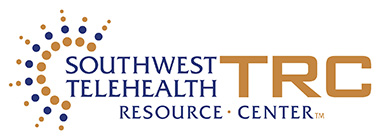
As a second-year medical student at the University of Arizona College of Medicine – Tucson, I’ve been fortunate to interact with patients early in my training. Yet the experiences that left the deepest impact weren’t from structured classroom activities. They came from the time I chose to spend at the Crisis Response Center (CRC) at Banner University South, a 24-hour stabilization center for youth experiencing mental health crises.
Sitting in on patient interviews, I witnessed the wide range of stories and struggles that bring children and adolescents to the CRC. Despite their differences, one theme stood out: the lack of continuity in behavioral healthcare, especially for those in foster care. Given my research on telehealth since 2020, I kept asking myself, could telehealth be part of the solution
Gaps in Care for Youth in Foster Systems
Children in Arizona’s foster care system face unique challenges in accessing mental health services. Provider shortages across the state often delay evaluations and treatment. In fact, in 2016, three foster and adoptive mothers advocated for HB2442, or “Jacob’s Law,” named after a child who waited 10 months for PTSD treatment after entering foster care. The law set timelines for rapid behavioral health responses and ongoing services. Even so, gaps remain.
One of the biggest issues is frequent placement changes. In 2021, 38% of children in Arizona foster care experienced more than two placements in a single year. Each move disrupts established relationships with providers and caregivers. Shortages of foster families, especially in Native communities, mean that children are often placed “out-of-county,” leading to more fragmented care.
Placement instability also fuels a cycle of crisis. A study by the Child and Adolescent Services Research Center found that frequent moves increase reliance on emergency services. In turn, higher emergency utilization often leads caregivers to feel overwhelmed and incapable of continuing to foster that child, resulting in yet another move. This closed loop perpetuates instability and loss.
Where Telehealth Fits In
When I spoke with Dr. Kathy Smith, a child and adolescent psychiatrist at the CRC, we discussed how telehealth can positively impact patient outcomes. Eliminating travel increases appointment attendance, and virtual visits allow providers to support families directly in the home, even in moments of crisis. A caregiver could connect with a clinician on video in real-time for help with behavior management before escalation, rather than relying on emergency services.
Telehealth can also be used proactively: offering caregiver training on topics like social skills support, abuse prevention, and managing challenging behaviors. While this requires greater upfront effort for both providers and families, especially when caregivers are also navigating their own trauma or substance use, it can offer more frequent appointments, shorter wait times, and resources tailored to caregiver needs.
Evidence for Impact
Research affirms telehealth’s potential. Telehealth has already been shown to reduce barriers like transportation, scheduling conflicts, and childcare needs, all common obstacles for foster and kinship caregivers.
Telehealth offers encouraging outcomes for addressing complex trauma. Trauma-focused Cognitive Behavioral Therapy studies show that youth receiving telehealth interventions had significant improvements in PTSD symptoms, with satisfaction rates for both children and parents comparable to in-person care. One pilot study even reported a 0% attrition rate for telehealth compared to 33% for in-person sessions.
Among group home residents, telehealth also boosted follow-up: 77% attended telehealth primary care appointments versus only 43% in foster placements. These findings highlight the importance of tailoring telehealth to different care settings.
Looking Ahead
Since I began following telehealth in 2020, its role in healthcare has only grown. What started as a temporary solution during a global pandemic has evolved into a permanent fixture of care delivery. But permanence alone is not enough, we must ensure it reaches the patients who need it most.
For youth in foster care and under the Department of Child Safety, telehealth offers a pathway toward stability: reducing missed appointments, minimizing disruptive transitions, and empowering caregivers with real-time support. These children deserve innovative, accessible, and timely mental health care.
As I continue my medical training, I’m committed to helping ensure that telehealth doesn’t just expand access broadly, but in ways that truly meet vulnerable youth where they are and give them the continuity of care they deserve.


